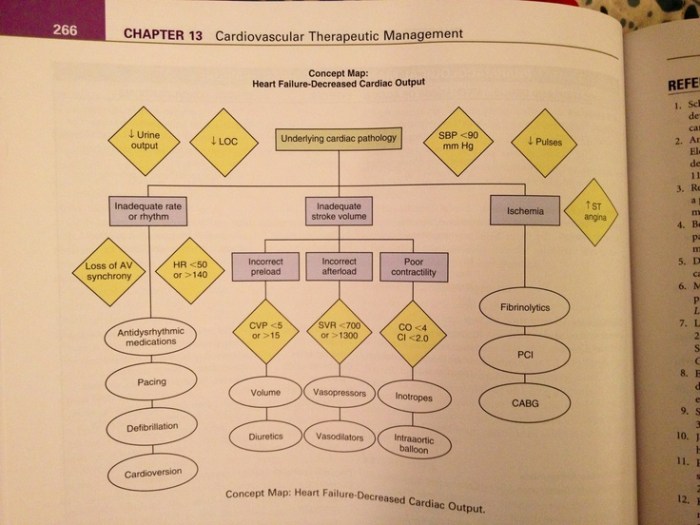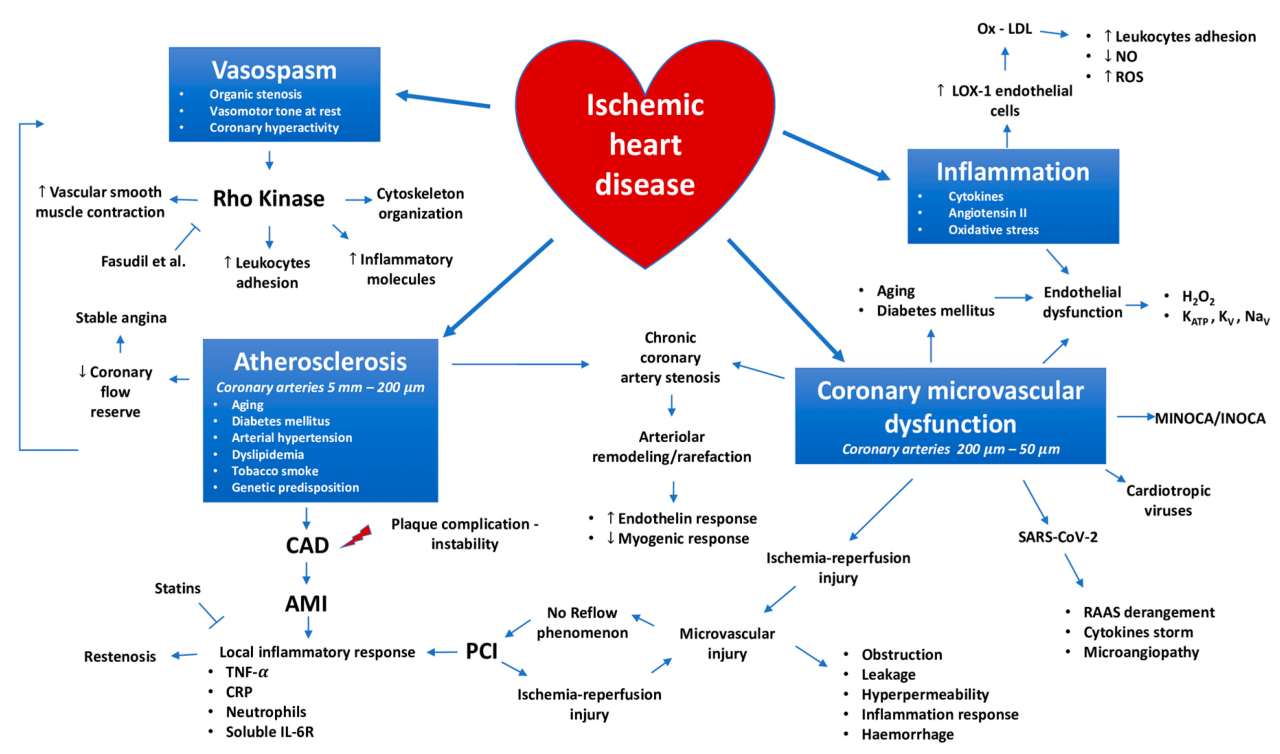Concept map for chronic heart failure offers a comprehensive visual representation of the key concepts and relationships related to this debilitating condition. It encompasses the etiology, pathophysiology, clinical manifestations, diagnosis, and management of CHF, providing a valuable tool for healthcare professionals and patients alike.
Chronic heart failure (CHF) is a complex and progressive condition characterized by the heart’s inability to pump blood effectively. It affects millions of individuals worldwide and is associated with significant morbidity and mortality. Understanding the underlying mechanisms, clinical presentation, and management strategies of CHF is crucial for improving patient outcomes.
Overview of Chronic Heart Failure (CHF)
Chronic heart failure (CHF) is a complex and progressive condition characterized by the inability of the heart to pump sufficient blood to meet the metabolic demands of the body. CHF affects millions of people worldwide and is a leading cause of morbidity and mortality.
The prevalence of CHF increases with age, and it is more common in men than in women. Risk factors for CHF include coronary artery disease, hypertension, diabetes, obesity, and smoking.
Pathophysiology of CHF: Concept Map For Chronic Heart Failure

The pathophysiology of CHF is complex and involves a number of factors, including impaired ventricular function, neurohormonal activation, and inflammation.
Impaired ventricular function is the primary cause of CHF. This can be caused by a variety of factors, including myocardial infarction, cardiomyopathy, and valvular heart disease.
Neurohormonal activation is another important factor in the pathophysiology of CHF. When the heart is unable to pump sufficient blood, the body releases a number of hormones, including renin, angiotensin II, and aldosterone. These hormones cause vasoconstriction, fluid retention, and increased heart rate, which can further worsen CHF.
Clinical Manifestations and Diagnosis of CHF

The clinical manifestations of CHF can vary depending on the severity of the condition. Common signs and symptoms include:
- Shortness of breath
- Fatigue
- Edema
- Chest pain
- Palpitations
The diagnosis of CHF is based on a combination of clinical findings and diagnostic tests. These tests may include:
- Physical examination
- Chest X-ray
- Echocardiogram
- Cardiac catheterization
Management of CHF

The management of CHF involves a combination of medications, lifestyle modifications, and device therapies.
Medications used to treat CHF include:
- Diuretics
- ACE inhibitors
- Beta-blockers
- Aldosterone antagonists
Lifestyle modifications that can help to manage CHF include:
- Weight loss
- Sodium restriction
- Regular exercise
- Smoking cessation
Device therapies that can be used to treat CHF include:
- Pacemakers
- Implantable cardioverter-defibrillators (ICDs)
- Ventricular assist devices (VADs)
Concept Map for CHF
A concept map is a visual representation of the key concepts and relationships related to a topic. A concept map for CHF would include the following concepts:
- Etiology
- Pathophysiology
- Clinical manifestations
- Diagnosis
- Management
A concept map for CHF would help to illustrate the complex relationships between these concepts and how they contribute to the development and progression of CHF.
Prognosis and Outcomes in CHF
The prognosis of CHF depends on a number of factors, including the severity of the condition, the underlying cause, and the patient’s overall health. The mortality rate for CHF is high, with approximately 50% of patients dying within 5 years of diagnosis.
Common complications of CHF include:
- Heart failure hospitalizations
- Arrhythmias
- Thromboembolism
- Renal failure
- Death
Research and Future Directions in CHF
There is a great deal of ongoing research into CHF. This research is focused on developing new and more effective treatments for CHF, as well as improving the quality of life for patients with CHF.
Some of the most promising areas of research in CHF include:
- Stem cell therapy
- Gene therapy
- New drug therapies
- Device therapies
User Queries
What is the purpose of a concept map for chronic heart failure?
A concept map for chronic heart failure provides a visual representation of the key concepts and relationships related to the condition, aiding in understanding its complexity and facilitating effective management.
How can a concept map help in managing chronic heart failure?
A concept map can assist healthcare professionals in organizing and visualizing the various factors involved in CHF, enabling them to develop individualized treatment plans and monitor patient progress effectively.
What are the benefits of using a concept map for chronic heart failure education?
Concept maps can enhance the learning process for healthcare students and patients by simplifying complex information and illustrating the interconnectedness of concepts related to CHF.